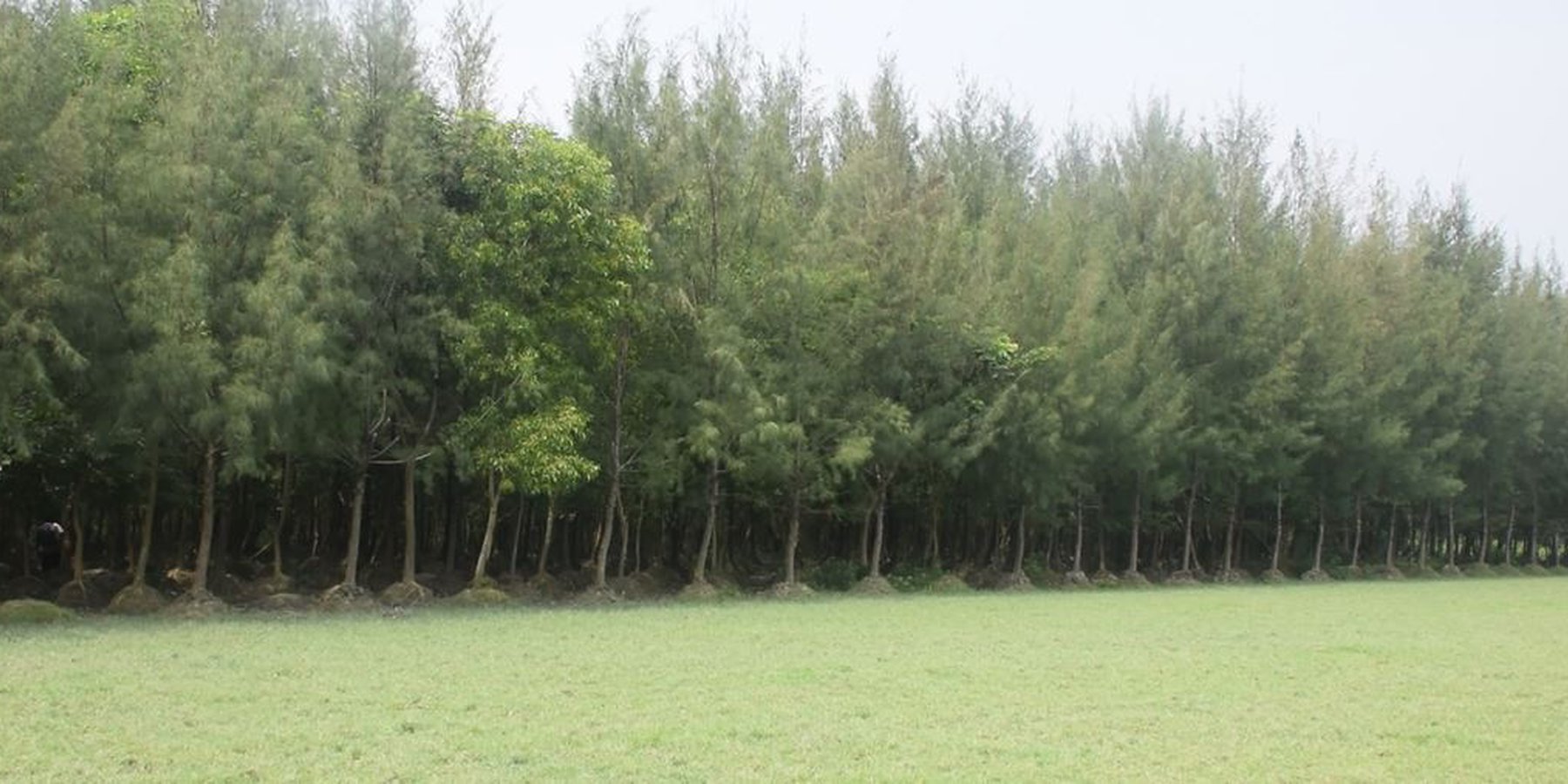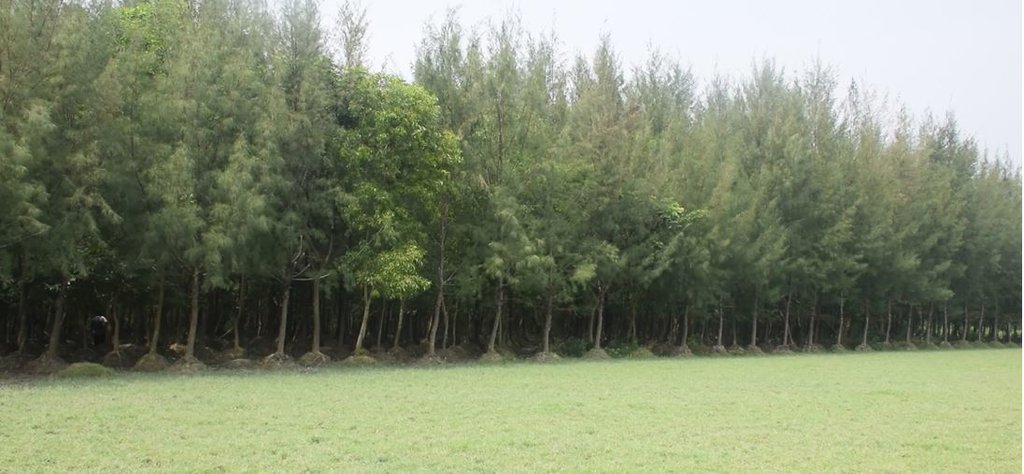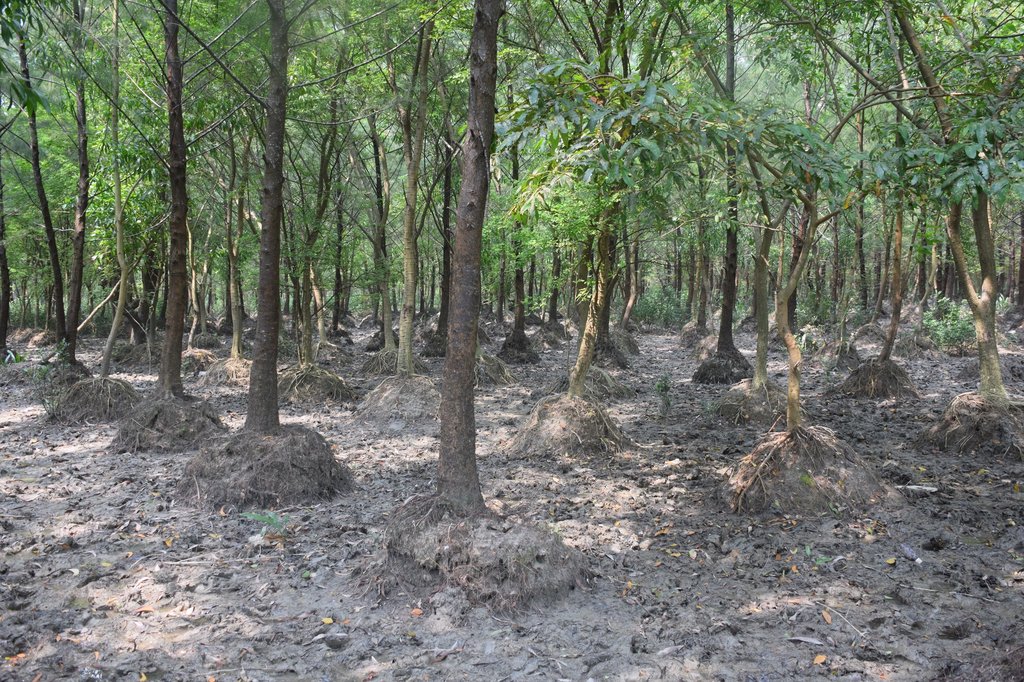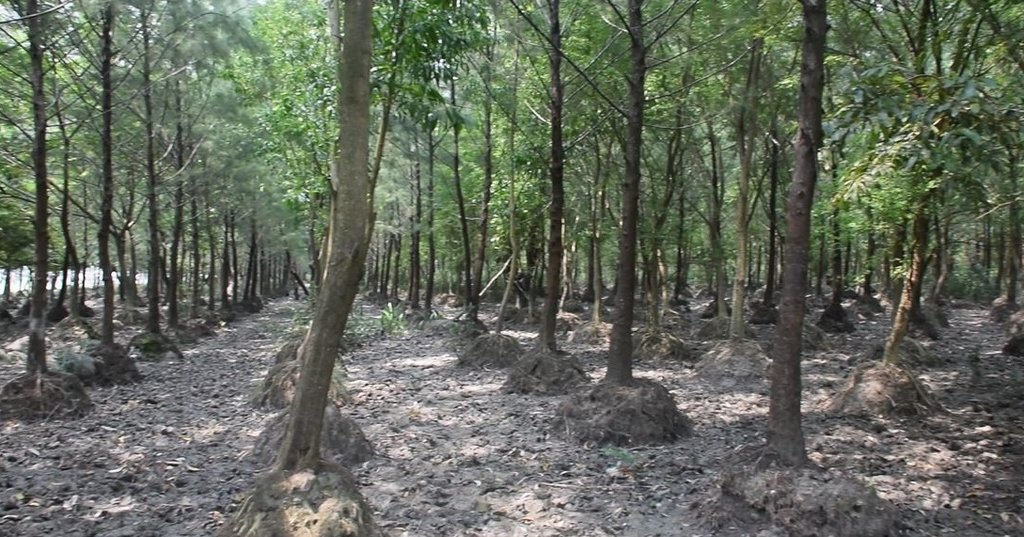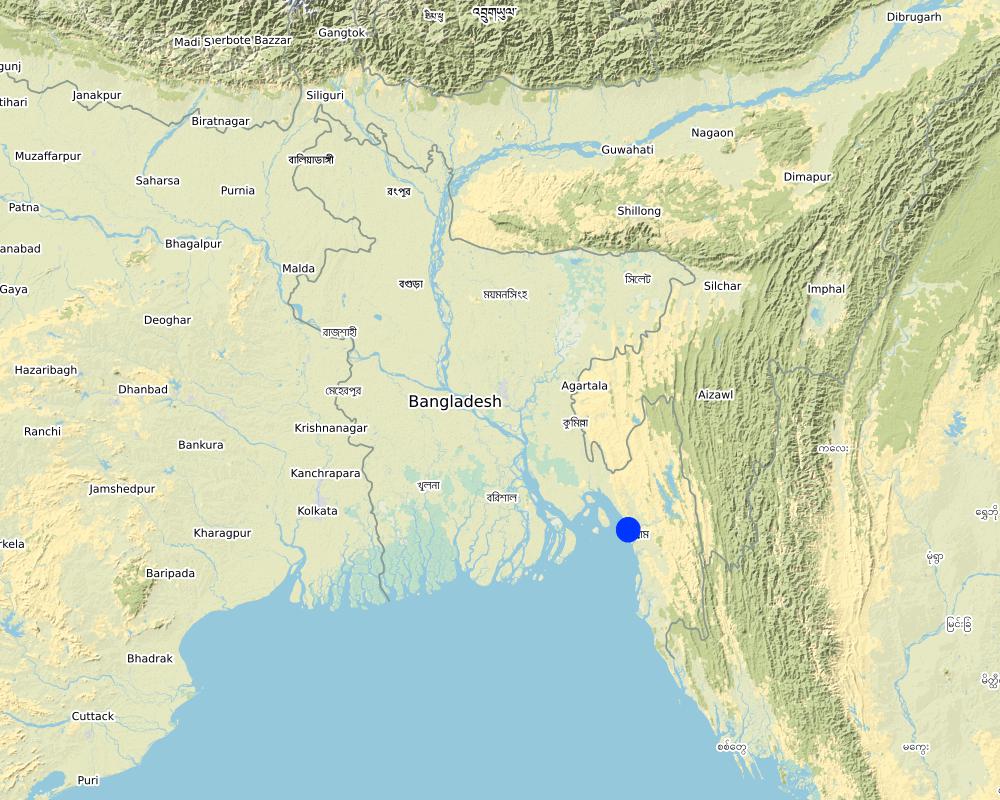Mound plantation in coastal area with non-mangrove plant species for land stabilization [Bangladesh]
- Creation:
- Update:
- Compiler: Fazlay Arafat
- Editors: Mutasim Billah, Md. Jakir Hossain, Md. Arfanuzzaman
- Reviewers: Nicole Harari, Rima Mekdaschi Studer, Ursula Gaemperli
Mound plantation
technologies_4732 - Bangladesh
View sections
Expand all Collapse all1. General information
1.2 Contact details of resource persons and institutions involved in the assessment and documentation of the Technology
Key resource person(s)
SLM specialist:
Md. Anowar Hossain
Bangladesh Forest Department
Bangladesh
land user:
Mohammad Rahman
Local community people
Bangladesh
Name of project which facilitated the documentation/ evaluation of the Technology (if relevant)
Decision Support for Mainstreaming and Scaling out Sustainable Land Management (GEF-FAO / DS-SLM)Name of the institution(s) which facilitated the documentation/ evaluation of the Technology (if relevant)
Bangladesh Forest Department (Bangladesh Forest Department) - BangladeshName of the institution(s) which facilitated the documentation/ evaluation of the Technology (if relevant)
FAO Bangladesh (FAO Bangladesh) - Bangladesh1.3 Conditions regarding the use of data documented through WOCAT
The compiler and key resource person(s) accept the conditions regarding the use of data documented through WOCAT:
Yes
1.4 Declaration on sustainability of the described Technology
Is the Technology described here problematic with regard to land degradation, so that it cannot be declared a sustainable land management technology?
No
2. Description of the SLM Technology
2.1 Short description of the Technology
Definition of the Technology:
Mound plantation with non-mangrove species to transform mono-culture plantations subsequently into more ecologically resilient, mixed species plantations and as well as to accelerate natural processes of accretion and land stabilization in coastal areas.
2.2 Detailed description of the Technology
Description:
Bangladesh has nearly five decades of experience of coastal afforestation and reforestation on offshore islands and newly accreted lands. Coastal plantations were originally planted mainly to protect coastal populations against tidal bores, cyclones and storm surges and as well as to speed up the stabilization of newly accreted lands that eventually protect interior agricultural land from saline intrusion. According to the historical approaches to coastal afforestation and reforestation in Bangladesh, only a few pioneer mangrove species are suitable for planting on newly accreted coastal lands. Mangrove plantations that were established with a handful of pioneer species require increasing levels of management to promote ‘artificial succession’. There is need to transform these predominantly monoculture plantations subsequently into more ecologically resilient, mixed species plantations. Mound plantation with non-mangrove species was introduced in some places to address this issue.
Under the ‘Climate Resilient Participatory Afforestation and Reforestation Project’ non-mangrove mound plantations were established in 2013 in South Salimpur area of Sitakundu upazila (administrative unit) in Chittagong district by the Forest Department. Earlier, in 1983 the newly accreted char land (river islands formed from sedimentation) was planted with mangrove species Keora (Sonneratia apetala). Mangroves are salt-tolerant trees that cope with salt water immersion and wave action and are adapted to life in waterlogged and harsh coastal conditions. Due to cyclones and illegal removal of trees the Keora plantations were destroyed in many spots. In the meantime, the mangroves had accumulated sediments and the land was raised as compared to the adjacent inland areas. This accreted and stabilized land is suitable for non-mangrove plantation as the water does not flood the raised land regularly.
However, the area is regularly inundated by the tide during the monsoon. In addition storm surges flood the land and cause waterlogged conditions, which are not suitable for the survival of non-mangrove species. To successfully plant non-mangrove species along the coast, mound plantation is practiced. The mound served as a raised bed to protect the seedlings from waterlogged conditions in monsoon seasons. Akashmoni (Acacia auriculiformis), Jhau (Casuarina equisetifolia), Arjun (Terminalia arjuna), Rain-tree (Albizia saman), Babla (Vachellia nilotica) tree species are planted in mound. The major activities of this practice are cleaning of site from weeds & making of round shaped mounds. The diameter of the mound in the base is 1m and in top is 0.6m with a height of 0.6m. The mound is prepared through soil heaps from the plantation site. Inter and intra row spacing is 2.6m x 2.6m center to center of the mounds. 1500 mounds per hectare are constructed and one bamboo stick put inside every mound to support the plated seedlings to stand firmly.
The dimension of pit in each mound is 0.3m x-0.3m s 0.3m and the pit needs to be kept open for two weeks for drying before the one year old seedling can be transplanted in the pits. The seedlings were raised in the nursery of Forest Department under the project. While planting seedlings 0.5 kg compost and 0.5 kg loamy soil are mixed in the pit to increase the fertility of the soil. Vacancy filling is required in the next year and weeding practice continues till 3rd year of plantation.
Advantage of mixed-species over monocultures is the promotion of diversifying production under different rotation periods. Mixed-species plantations are more resistant to damage caused by storms, insects or diseases. Mound plantation with non-mangrove mixed species increased the diversity and ecological services. Mound plantations are vulnerable to a variety of threats from livestock grazing, mainly buffalo, to extraction of timber and outright conversion of plantations to other land uses such as agriculture, aquaculture and salt production.
However, the mound plantation practice contributes in coastal greenbelt species diversification along with speed up the natural processes of accretion and land stabilization.
2.3 Photos of the Technology
2.5 Country/ region/ locations where the Technology has been applied and which are covered by this assessment
Country:
Bangladesh
Region/ State/ Province:
Chittagong district
Further specification of location:
Kattoli coast area
Specify the spread of the Technology:
- evenly spread over an area
If precise area is not known, indicate approximate area covered:
- 0.1-1 km2
Is/are the technology site(s) located in a permanently protected area?
No
Map
×2.6 Date of implementation
If precise year is not known, indicate approximate date:
- less than 10 years ago (recently)
2.7 Introduction of the Technology
Specify how the Technology was introduced:
- through projects/ external interventions
Comments (type of project, etc.):
Climate Resilient Participatory Afforestation and Reforestation Project’ by the Forest Department established the technology
3. Classification of the SLM Technology
3.1 Main purpose(s) of the Technology
- reduce, prevent, restore land degradation
- reduce risk of disasters
3.2 Current land use type(s) where the Technology is applied
Land use mixed within the same land unit:
No

Forest/ woodlands
- Tree plantation, afforestation
Tree plantation, afforestation: Specify origin and composition of species:
- Mixed varieties
- Coastal afforestation with non-mangrove plant species
Type of tree:
- Acacia auriculiformis
- Casuarina equisetifolia
- Terminalia Arjuna, Albizia Saman, Vachellia nilotica
Are the trees specified above deciduous or evergreen?
- evergreen
Products and services:
- Timber
- Fuelwood
- Nature conservation/ protection
- Recreation/ tourism
- Protection against natural hazards
3.3 Has land use changed due to the implementation of the Technology?
Has land use changed due to the implementation of the Technology?
- Yes (Please fill out the questions below with regard to the land use before implementation of the Technology)
Land use mixed within the same land unit:
No

Unproductive land
Specify:
Earlier the area was covered with mangroves species but due to cyclones and illegal logging the mangrove stand destroyed and the area turned to an unproductive land. However, the mangroves had stabilized the accredited land raised the land due to sediment deposition.
Remarks:
Only some mangrove plant species found in scatter
3.4 Water supply
Water supply for the land on which the Technology is applied:
- rainfed
3.5 SLM group to which the Technology belongs
- forest plantation management
- windbreak/ shelterbelt
- ecosystem-based disaster risk reduction
3.6 SLM measures comprising the Technology

vegetative measures
- V1: Tree and shrub cover
3.7 Main types of land degradation addressed by the Technology

soil erosion by water
- Wc: coastal erosion

chemical soil deterioration
- Cs: salinization/ alkalinization
3.8 Prevention, reduction, or restoration of land degradation
Specify the goal of the Technology with regard to land degradation:
- reduce land degradation
- restore/ rehabilitate severely degraded land
Comments:
Plant varieties that comes through natural succession process stabilize the newly formed coastal land. Mound plantation with non-mangrove species strengthen that process with other plantation services.
4. Technical specifications, implementation activities, inputs, and costs
4.1 Technical drawing of the Technology
Technical specifications (related to technical drawing):
The dimensions of structures are explained in the description part
Author:
Md. Fazlay Arafat
Date:
06/05/2019
4.2 General information regarding the calculation of inputs and costs
Specify how costs and inputs were calculated:
- per Technology area
Indicate size and area unit:
1 ha
If using a local area unit, indicate conversion factor to one hectare (e.g. 1 ha = 2.47 acres): 1 ha =:
1 ha=2.47 acres
other/ national currency (specify):
BDT
If relevant, indicate exchange rate from USD to local currency (e.g. 1 USD = 79.9 Brazilian Real): 1 USD =:
84.0
Indicate average wage cost of hired labour per day:
500 BDT
4.3 Establishment activities
| Activity | Timing (season) | |
|---|---|---|
| 1. | Nursery establishment | October-November |
| 2. | Raising seedlings | January-February |
| 3. | Site preparation: clearing of site and mound construction | April-May |
| 4. | Transplantation of seedlings | June |
| 5. | Fertilizer application: Compost mixed with loamy loamy soil | June |
4.4 Costs and inputs needed for establishment
| Specify input | Unit | Quantity | Costs per Unit | Total costs per input | % of costs borne by land users | |
|---|---|---|---|---|---|---|
| Labour | Nursery preparation | person-days | 17.0 | 500.0 | 8500.0 | 100.0 |
| Labour | Earth clearing and mound preparation | person-days | 150.0 | 500.0 | 75000.0 | 100.0 |
| Labour | Plantation work | person-days | 25.0 | 500.0 | 12500.0 | 100.0 |
| Equipment | Bucket | pieces | 15.0 | 250.0 | 3750.0 | 100.0 |
| Equipment | Spade | pieces | 15.0 | 500.0 | 7500.0 | 100.0 |
| Plant material | Seeds for nursery bed | Lump sum | 1.0 | 1000.0 | 1000.0 | 100.0 |
| Plant material | Poly bags | Pieces | 1800.0 | 1.0 | 1800.0 | 100.0 |
| Plant material | Bamboo stick to support seedlings | Pieces | 1600.0 | 2.0 | 3200.0 | 100.0 |
| Fertilizers and biocides | Compost to apply in plantation | kg | 1000.0 | 4.0 | 4000.0 | 100.0 |
| Fertilizers and biocides | Urea for poly bag seedling | kg | 4.0 | 35.0 | 140.0 | 100.0 |
| Fertilizers and biocides | TSP for poly bag seedling | kg | 4.0 | 40.0 | 160.0 | 100.0 |
| Fertilizers and biocides | MoP for poly bag seedling | kg | 4.0 | 30.0 | 120.0 | 100.0 |
| Construction material | Bamboo for nursery fencing | pieces | 4.0 | 250.0 | 1000.0 | 100.0 |
| Other | Seedling transportation cost | Lump-sum | 1.0 | 1000.0 | 1000.0 | 100.0 |
| Total costs for establishment of the Technology | 119670.0 | |||||
| Total costs for establishment of the Technology in USD | 1424.64 | |||||
4.5 Maintenance/ recurrent activities
| Activity | Timing/ frequency | |
|---|---|---|
| 1. | Vacancy filling | June |
| 2. | 1st year weeding | 3 times in a year |
| 3. | 2nd year weeding | 3 times in a year |
| 4. | 3rd year weeding | 2 times in a year |
| 5. | Fertilizer application to the newly planted trees | June |
4.6 Costs and inputs needed for maintenance/ recurrent activities (per year)
| Specify input | Unit | Quantity | Costs per Unit | Total costs per input | % of costs borne by land users | |
|---|---|---|---|---|---|---|
| Labour | Seedling transportation | person-days | 1.0 | 500.0 | 500.0 | 100.0 |
| Labour | Vacancy filling | person-days | 4.0 | 500.0 | 2000.0 | 100.0 |
| Labour | Fertilizer application to the newly planted trees | person-days | 4.0 | 500.0 | 2000.0 | 100.0 |
| Labour | Weeding | person-days | 40.0 | 500.0 | 20000.0 | 100.0 |
| Plant material | Bamboo stick to support seedlings | pieces | 350.0 | 2.0 | 700.0 | 100.0 |
| Fertilizers and biocides | NPK fertilizer | kg | 75.0 | 30.0 | 2250.0 | 100.0 |
| Total costs for maintenance of the Technology | 27450.0 | |||||
| Total costs for maintenance of the Technology in USD | 326.79 | |||||
4.7 Most important factors affecting the costs
Describe the most determinate factors affecting the costs:
Labor
5. Natural and human environment
5.1 Climate
Annual rainfall
- < 250 mm
- 251-500 mm
- 501-750 mm
- 751-1,000 mm
- 1,001-1,500 mm
- 1,501-2,000 mm
- 2,001-3,000 mm
- 3,001-4,000 mm
- > 4,000 mm
Agro-climatic zone
- humid
5.2 Topography
Slopes on average:
- flat (0-2%)
- gentle (3-5%)
- moderate (6-10%)
- rolling (11-15%)
- hilly (16-30%)
- steep (31-60%)
- very steep (>60%)
Landforms:
- plateau/plains
- ridges
- mountain slopes
- hill slopes
- footslopes
- valley floors
Altitudinal zone:
- 0-100 m a.s.l.
- 101-500 m a.s.l.
- 501-1,000 m a.s.l.
- 1,001-1,500 m a.s.l.
- 1,501-2,000 m a.s.l.
- 2,001-2,500 m a.s.l.
- 2,501-3,000 m a.s.l.
- 3,001-4,000 m a.s.l.
- > 4,000 m a.s.l.
Indicate if the Technology is specifically applied in:
- not relevant
5.3 Soils
Soil depth on average:
- very shallow (0-20 cm)
- shallow (21-50 cm)
- moderately deep (51-80 cm)
- deep (81-120 cm)
- very deep (> 120 cm)
Soil texture (topsoil):
- fine/ heavy (clay)
Soil texture (> 20 cm below surface):
- fine/ heavy (clay)
Topsoil organic matter:
- low (<1%)
5.4 Water availability and quality
Ground water table:
< 5 m
Availability of surface water:
excess
Water quality (untreated):
unusable
Water quality refers to:
both ground and surface water
Is water salinity a problem?
Yes
Specify:
Due to regular tidal inundation the soil become saline and only support to grow mangrove plant species
Is flooding of the area occurring?
Yes
Regularity:
episodically
5.5 Biodiversity
Species diversity:
- low
Habitat diversity:
- low
5.6 Characteristics of land users applying the Technology
Sedentary or nomadic:
- Sedentary
Market orientation of production system:
- mixed (subsistence/ commercial)
Off-farm income:
- 10-50% of all income
Relative level of wealth:
- poor
Individuals or groups:
- employee (company, government)
Level of mechanization:
- manual work
Gender:
- women
- men
Age of land users:
- youth
- middle-aged
- elderly
Indicate other relevant characteristics of the land users:
Bangladesh Forest Department established the coastal plantation through participatory approach of co-management with adjacent local communities.
5.7 Average area of land used by land users applying the Technology
- < 0.5 ha
- 0.5-1 ha
- 1-2 ha
- 2-5 ha
- 5-15 ha
- 15-50 ha
- 50-100 ha
- 100-500 ha
- 500-1,000 ha
- 1,000-10,000 ha
- > 10,000 ha
Is this considered small-, medium- or large-scale (referring to local context)?
- small-scale
5.8 Land ownership, land use rights, and water use rights
Land ownership:
- state
Land use rights:
- communal (organized)
Water use rights:
- open access (unorganized)
Are land use rights based on a traditional legal system?
No
5.9 Access to services and infrastructure
health:
- poor
- moderate
- good
education:
- poor
- moderate
- good
technical assistance:
- poor
- moderate
- good
employment (e.g. off-farm):
- poor
- moderate
- good
markets:
- poor
- moderate
- good
energy:
- poor
- moderate
- good
roads and transport:
- poor
- moderate
- good
drinking water and sanitation:
- poor
- moderate
- good
financial services:
- poor
- moderate
- good
6. Impacts and concluding statements
6.1 On-site impacts the Technology has shown
Socio-economic impacts
Production
wood production
forest/ woodland quality
risk of production failure
Comments/ specify:
Due to diversified non-mangrove species used in the plantation the risk of failure reduced
production area
Comments/ specify:
Mound plantation increase production area through converting unproductive land areas
land management
Comments/ specify:
Once established, the non-mangrove species do not require much silvicultural operation
Socio-cultural impacts
recreational opportunities
Comments/ specify:
The spot become popular to tourist
SLM/ land degradation knowledge
Ecological impacts
Water cycle/ runoff
surface runoff
Comments/ specify:
surface runoff decrease as raised mounds acts as a barrier
evaporation
Soil
soil cover
soil loss
Comments/ specify:
Soil loss with water decreased as mounds reduces surface runoff
soil accumulation
soil organic matter/ below ground C
Biodiversity: vegetation, animals
Vegetation cover
biomass/ above ground C
plant diversity
beneficial species
habitat diversity
pest/ disease control
Climate and disaster risk reduction
flood impacts
Comments/ specify:
flood impact decreases as the mound forest act as a barrier and protect the raised land
emission of carbon and greenhouse gases
wind velocity
6.2 Off-site impacts the Technology has shown
wind transported sediments
impact of greenhouse gases
6.3 Exposure and sensitivity of the Technology to gradual climate change and climate-related extremes/ disasters (as perceived by land users)
Gradual climate change
Gradual climate change
| Season | increase or decrease | How does the Technology cope with it? | |
|---|---|---|---|
| annual temperature | increase | well | |
| seasonal rainfall | wet/ rainy season | increase | well |
Climate-related extremes (disasters)
Meteorological disasters
| How does the Technology cope with it? | |
|---|---|
| tropical storm | moderately |
| local rainstorm | well |
| local thunderstorm | well |
Hydrological disasters
| How does the Technology cope with it? | |
|---|---|
| storm surge/ coastal flood | well |
Biological disasters
| How does the Technology cope with it? | |
|---|---|
| epidemic diseases | moderately |
| insect/ worm infestation | moderately |
Other climate-related consequences
Other climate-related consequences
| How does the Technology cope with it? | |
|---|---|
| sea level rise | moderately |
6.4 Cost-benefit analysis
How do the benefits compare with the establishment costs (from land users’ perspective)?
Short-term returns:
negative
Long-term returns:
very positive
How do the benefits compare with the maintenance/ recurrent costs (from land users' perspective)?
Short-term returns:
negative
Long-term returns:
very positive
6.5 Adoption of the Technology
- 1-10%
Of all those who have adopted the Technology, how many did so spontaneously, i.e. without receiving any material incentives/ payments?
- 91-100%
6.6 Adaptation
Has the Technology been modified recently to adapt to changing conditions?
No
6.7 Strengths/ advantages/ opportunities of the Technology
| Strengths/ advantages/ opportunities in the land user’s view |
|---|
| The mixed plantation is now more pest resistance |
| The aesthetic beauty is increased and attract more tourists |
| Strengths/ advantages/ opportunities in the compiler’s or other key resource person’s view |
|---|
| The mixed stand with mound plantation supports more ecological services like supply of fuel wood, wildlife habitat, timber, tourism, greenbelt, etc. |
| Species mixtures maximize the use of resources, and consequently increase stand-level productivity and carbon sequestration. |
| Speed up the natural succession process. Otherwise it takes long period of time to grow non-mangrove species in coastal areas. |
6.8 Weaknesses/ disadvantages/ risks of the Technology and ways of overcoming them
| Weaknesses/ disadvantages/ risks in the land user’s view | How can they be overcome? |
|---|---|
| The mounds often requires to be repaired when it faces frequent tropical storms and storm surges | |
| Grazing hampers the stand at the initial stage | Community awareness |
| Weaknesses/ disadvantages/ risks in the compiler’s or other key resource person’s view | How can they be overcome? |
|---|---|
| Only salt tolerant plant species can be planted |
7. References and links
7.1 Methods/ sources of information
- field visits, field surveys
Number of field visit:02
- interviews with land users
Number of informants: 03
- interviews with SLM specialists/ experts
Number of informants: 02
7.2 References to available publications
Title, author, year, ISBN:
N/A
7.3 Links to relevant online information
Title/ description:
N/A
7.4 General comments
WOCAT questionnaire covers all the technical aspect of the practice
Links and modules
Expand all Collapse allLinks
No links
Modules
No modules


